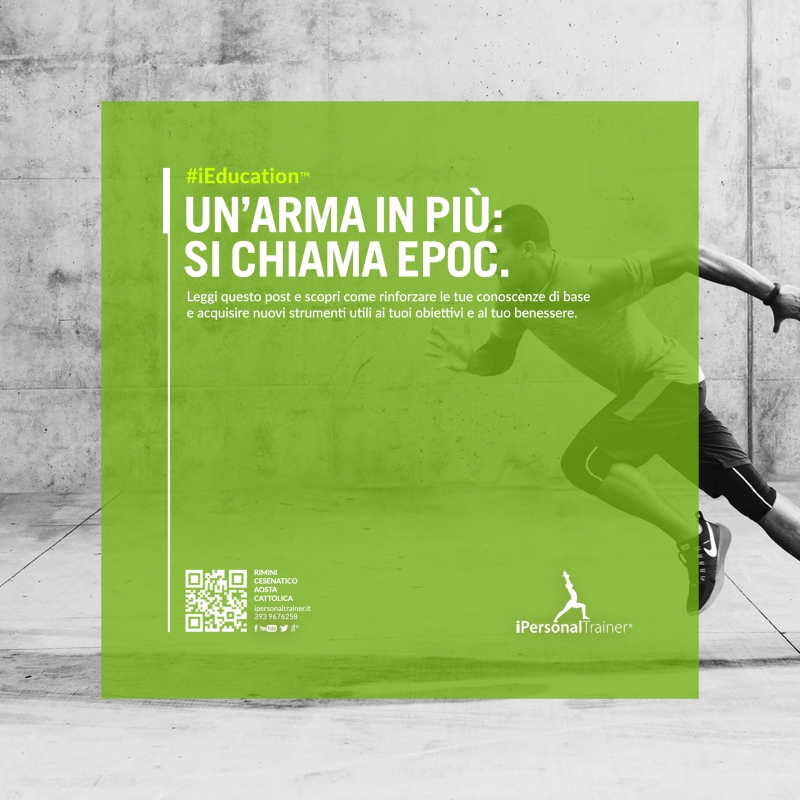This is a technique that is used by athletes to improve their performance, today it is also proposed in the fitness sector as well as professional in the sector as a weapon for incisively stimulating the metabolism and calorific consumption of their clients/students. More commonly called ‘oxygen debt’ EPOC (Excess Post Exercise Oxygen Consumption) indicates the supplementary quantity of oxygen that is requested by the body in order to recuperate after exercising. In substance we are talking about a high impact training session which looks for the successive peaks in cardiac readings (of resistance or force- resistance) and complete active recoveries, sometimes taking you heartbeat back to its minimal for then taking off again towards ‘flight’. All this makes the body go into ‘debt’, thus asking the body for oxygen that will gradually be recovered in the post work out phase. This mechanism can be reached through aerobic moves, like a quick walk uphill, a maximum sprint, a run or a bike ride, muscle/metabolism exercises that require a commitment of long kinematic chains (like a swing on a kettlebell for example) but also a work force s long as you respect some specific parameters. EPOC can be measured through two determined factors: time and/or cardiac frequency.
HOW TO ACT? Through two substantial components: one rapid and one prolonged.
1) THE RAPID COMPONENT is the fruit of the first recuperation phase (which lasts roughly 1 hour, in addition to contemplating other biochemical recovery processes it also allows you to completely eliminate all of the lactic acid produced).
2) THE PROLONGED COMPONENT which lasts roughly 5-6 hours and involves the METABOLISM OF FATS. (plus the basic metabolism remains higher for at least 16-24 hours). In conclusion if a training session that lasts about 50’ – 60’ in ‘fat burning’ zone has a discreet calorific consummation (M.B. growth about 5%) a training session with EPOC of roughly 30’ – 40’ will gain a strong metabolic activation (M.B. growth about 20-25%) along with a decisively larger calorific consummation (almost double); the surprising thing is that its true function doesn’t come through the training itself bit through the recuperation period; there follows an aerobic/metabolism improvement of resistance or force-resistance. It is important to underline that it isn’t something that is ok for everybody; we primarily recommend it after a phase of aerobics of muscle conditioning (after a couple of months for somebody who is inactive) or as an integration of a specific workload, supporting slimming or other prefixed objectives.
CHANGE. NOW YOU CAN
iPersonalTrainer






Get Social